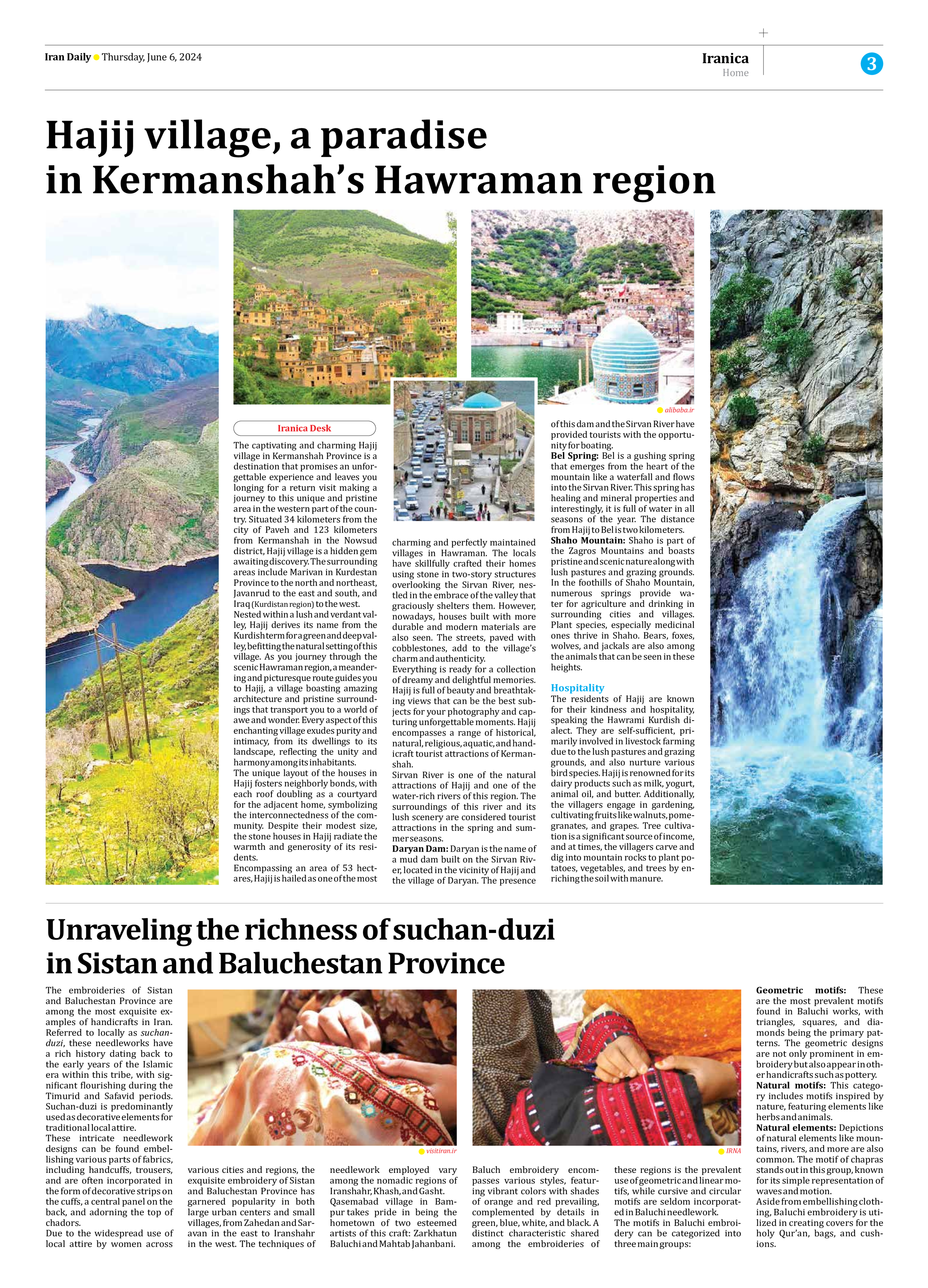
Copy in clipboard...
Unraveling the richness of suchan-duzi in Sistan and Baluchestan Province
These intricate needlework designs can be found embellishing various parts of fabrics, including handcuffs, trousers, and are often incorporated in the form of decorative strips on the cuffs, a central panel on the back, and adorning the top of chadors.
Due to the widespread use of local attire by women across various cities and regions, the exquisite embroidery of Sistan and Baluchestan Province has garnered popularity in both large urban centers and small villages, from Zahedan and Saravan in the east to Iranshahr in the west. The techniques of needlework employed vary among the nomadic regions of Iranshahr, Khash, and Gasht.
Qasemabad village in Bampur takes pride in being the hometown of two esteemed artists of this craft: Zarkhatun Baluchi and Mahtab Jahanbani.
Baluch embroidery encompasses various styles, featuring vibrant colors with shades of orange and red prevailing, complemented by details in green, blue, white, and black. A distinct characteristic shared among the embroideries of these regions is the prevalent use of geometric and linear motifs, while cursive and circular motifs are seldom incorporated in Baluchi needlework.
The motifs in Baluchi embroidery can be categorized into three main groups:
Geometric motifs: These are the most prevalent motifs found in Baluchi works, with triangles, squares, and diamonds being the primary patterns. The geometric designs are not only prominent in embroidery but also appear in other handicrafts such as pottery.
Natural motifs: This category includes motifs inspired by nature, featuring elements like herbs and animals.
Natural elements: Depictions of natural elements like mountains, rivers, and more are also common. The motif of chapras stands out in this group, known for its simple representation of waves and motion.
Aside from embellishing clothing, Baluchi embroidery is utilized in creating covers for the holy Qur’an, bags, and cushions.







